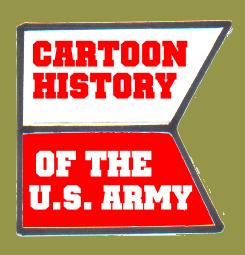
ALEXANDER AT TYRE
 ______Alexander the Great was just getting started in the World Conquest Game in 333 B.C. He had defeated the Persians in Anatolia, paying them back for the Persian invasion of 480 B.C. Now he could move his Greek and Macedonian troops east, towards the enemy capital of Persepolis, or south, towards the Phoenician cities of the eastern Mediterranean and Egypt. He chose the south.
______Alexander the Great was just getting started in the World Conquest Game in 333 B.C. He had defeated the Persians in Anatolia, paying them back for the Persian invasion of 480 B.C. Now he could move his Greek and Macedonian troops east, towards the enemy capital of Persepolis, or south, towards the Phoenician cities of the eastern Mediterranean and Egypt. He chose the south.
______Alexander had a good strategic reason for heading south: the Persian fleet. Operating away from his Greek base of support Alexander's lines of communications were exposed to naval interdiction. By removing the Persian naval bases he would ensure his logistics and perhaps even get access to Egypt's wheat crops for shipment by sea to Greece.
______One by one the coastal cities fell and the Persian ships docked in them came under control of Alexander. The Persian fleet was actually made up of Phoenician ships, which were manned by sailors whose naval heritage went back probably further than any other people. The Phoenician subject-states of the Persian Empire were not particularly eager to fight Alexander but one city held out: Tyre.
______Tyre was built on an offshore island and felt that it could withstand Alexander's efforts to take it, especially with Persian ships coming and going from the city at will. It had to be taken in order to secure Alexander's seaward flank.
 ______One immediate result of Alexander's attention was the recall to Tyre of the remainder of the Persian fleet. The crews were incorporated into the city's defenses as Alexander pondered the problem of taking the island fortress.
______One immediate result of Alexander's attention was the recall to Tyre of the remainder of the Persian fleet. The crews were incorporated into the city's defenses as Alexander pondered the problem of taking the island fortress.
______Alexander decided to build a mole, or causeway, from the shore to the walls of the island city. Such a causeway would enable Alexander to move his great siege machines up to the walls of the island fortress and smashing them in. Building the mole involved moving huge stones and debris to the site. It also meant a fight with the Persian ships which sallied forth to harass Alexander's force.
______Alexander had to use ships captured from Aradus, Tripolis, Byblus, Beirut and Sidon to defend his soldiers as they built the mole. Manned by his new Phoenician allies, they proved to be key in taking the city.
 ______Because the siege machines alone could not penetrate the Tyrian defenses (probably because of the narrow front caused by the mole being only about a hundred feet wide) Alexander launched simultaneous naval and marine attacks on the city: the Phoenician fleet attacked Tyre's southern port and destroyed the ships that had been defending the city while Alexander landed soldiers on the northern port. The three attacks taken together were more than the defenders could stand.
______Because the siege machines alone could not penetrate the Tyrian defenses (probably because of the narrow front caused by the mole being only about a hundred feet wide) Alexander launched simultaneous naval and marine attacks on the city: the Phoenician fleet attacked Tyre's southern port and destroyed the ships that had been defending the city while Alexander landed soldiers on the northern port. The three attacks taken together were more than the defenders could stand.
______Some Tyrians made suicidal charges at the Macedonian and Greek soldiers. Others climbed to the roofs and threw stones at the soldiers. Some committed suicide rather than be captured.
______Over 6,000 Tyrians were killed during the fighting in the city. 4,000 of Alexander's troops were wounded and a few hundred killed. Alexander was so ticked off at losing even that many soldiers that he had 2,000 Tyrians crucified on the beach. Today the stones of Alexander's causeway still remain for anyone to come and see and thanks to silting around it the island it stood on is now a part of the mainland.
WHAT WAS A PRIVATEER?







 ______Alexander the Great was just getting started in the World Conquest Game in 333 B.C. He had defeated the Persians in Anatolia, paying them back for the Persian invasion of 480 B.C. Now he could move his Greek and Macedonian troops east, towards the enemy capital of Persepolis, or south, towards the Phoenician cities of the eastern Mediterranean and Egypt. He chose the south.
______Alexander the Great was just getting started in the World Conquest Game in 333 B.C. He had defeated the Persians in Anatolia, paying them back for the Persian invasion of 480 B.C. Now he could move his Greek and Macedonian troops east, towards the enemy capital of Persepolis, or south, towards the Phoenician cities of the eastern Mediterranean and Egypt. He chose the south. ______One immediate result of Alexander's attention was the recall to Tyre of the remainder of the Persian fleet. The crews were incorporated into the city's defenses as Alexander pondered the problem of taking the island fortress.
______One immediate result of Alexander's attention was the recall to Tyre of the remainder of the Persian fleet. The crews were incorporated into the city's defenses as Alexander pondered the problem of taking the island fortress. ______Because the siege machines alone could not penetrate the Tyrian defenses (probably because of the narrow front caused by the mole being only about a hundred feet wide) Alexander launched simultaneous naval and marine attacks on the city: the Phoenician fleet attacked Tyre's southern port and destroyed the ships that had been defending the city while Alexander landed soldiers on the northern port. The three attacks taken together were more than the defenders could stand.
______Because the siege machines alone could not penetrate the Tyrian defenses (probably because of the narrow front caused by the mole being only about a hundred feet wide) Alexander launched simultaneous naval and marine attacks on the city: the Phoenician fleet attacked Tyre's southern port and destroyed the ships that had been defending the city while Alexander landed soldiers on the northern port. The three attacks taken together were more than the defenders could stand.